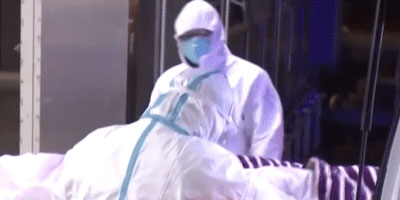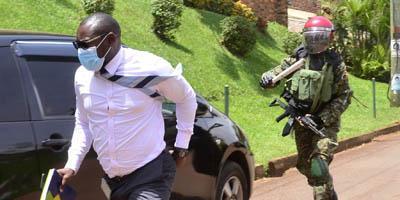
The timeline of response by authorities shows a significant lag as the disease builds momentum. Source: China News Agency video
A daily influx of disinformation combined with extraordinary stories about the effectiveness of China’s draconian lockdown seems to have left many people unaware that China’s lack of transparency and improper influence at the WHO were responsible for the slow global response to the COVID-19 outbreak.
People in Wuhan began getting sick in early December 2019. The Wuhan Health Commission issued a notice on December 30 about a ‘pneumonia of unknown cause,’ and asked local hospitals to assess patients suffering from similar symptoms in the past week. China contacted the WHO about these pneumonia-like cases on December 31, but did not refer to it as a new respiratory disease nor provide useful information to help other countries fight what would become a pandemic.
On January 1, China began censoring keywords related to the coronavirus outbreak as rumours emerged on China’s social media, and silenced Wuhan citizens who had alerted others about this new viral infection at the end of December. Some of these people were also reprimanded by the police on January 1 and forced, two days later, to sign a statement saying that they had spread unfounded and illegal rumours about the re-emergence of SARS. One of them, Dr. Li Wenliang, later died of COVID-19.
By contrast, Taiwan also communicated to the WHO on December 31 about this ‘atypical pneumonia,’ and raised concerns about the virus’ ability to transmit between humans, as was evident by the need to isolate the seven severe infected cases. The same day, it began screening passengers on direct flights from Wuhan for infectious symptoms.
The Chinese government identified the disease as a new coronavirus strain in the first week of January, but withheld vital genetic information about it. A group of scientists, led by Professor Yong-Zhen Zhang with the aid of Australian virologist Edward Holmes, succeeded in sequencing the virus as early as January 5, but waited in vain for Chinese authorities to give permission to publish the data. On January 11 they published the coronavirus genome independently on an open-access site, virological.org. The next day, their lab in Shanghai was shut down by authorities. They also sent their findings, based on the study of a hospitalised patient, to Nature on January 7, which was published on February 3. Only on January 12, after the virus’ genetic information become public, did the China’s National Health Commission publish five more coronavirus sequences.

The Twitter message: Relying on information from Chinese authorities, the WHO continues to deny human-to-human transmission.
On January 14 the WHO repeated the position that Chinese authorities saw no evidence of human transmission. The Chinese people and the rest of the world were told, until January 15, that there had been no new confirmed case in Wuhan since January 3. Authorities continued refusing to admit evidence of human-to-human transmission, yet at least one healthcare professional in Wuhan was infected as early as January 10, clear evidence of human-to-human transmission. On January 13, a case was reported in Thailand, on January 16 in Japan. On January 15 an infected person arrived in the US, on January 20 a case was reported in South Korea, and on January 23 the first Canadian was tested positive after coming back from Wuhan.
The pandemic was gaining momentum, yet China, and consequently the WHO, continued to deny human-to-human transmission until January 20 and 22 respectively.
Without warnings that should have come from the Chinese government, Wuhan went on to host the ‘Banquet of Ten Thousand Families’ as planned. On January 18, in this celebration of the Lunar New Year, more than 40,000 Wuhan families took part without regard for social distancing and other sanitary measures. Hundreds of attendees were later tested positive for COVID-19.
When Chinese authorities finally closed the Huanan Seafood Market, where the virus was said to originate from, it carried out environmental sanitation and disinfection without swabbing individual animals and collecting blood samples from people working there. If the reason is that China didn’t know how to cope with infectious disease, this is incompetence. If the reason is that China wanted to cover things up, this is dishonesty.
Following WHO’s failure to reply to its inquiry, on January 11 Taiwan sent, a group of medical experts to Wuhan to gather more information. They were denied access to Huanan Seafood Market and to the infected patients. Meanwhile, the US offered to send a team of experts to help China managing this outbreak, without being accepted.

Medical teams arrive at the market as the disease rapidly spreads. Source: From a video program about the virus from China News Service, a state-owned media outlet, available at https://youtu.be/MMm27Mj12x8
As Chinese authorities tried to conceal the dangers of the coronavirus from the world, the Taiwanese government became alerted, monitoring cyberspace closely and taking every ‘rumour’ seriously. Despite being so close to China, the island state of 23 million people was able to limit its number of confirmed cases to just under 450 and the death toll to 7, thanks to swift implementation of proper measures, like tracking the earliest patients’ contact histories from the onset of the outbreak.
Chinese authorities had a month to warn the rest of the world but failed to do so, acting only when they could no longer suppress mounting evidences of an epidemic. It is generally agreed that the best way to deal with a pandemic is to contain the virus by acting early. If China had a genuine and sincere wish, and the competence, to help prevent the spread of COVID-19, it would have acted long before the Lunar New Year holiday season, January 24-30, China’s busiest travel season.
When China finally locked down Wuhan on January 23, it was too late. Countless travellers had passed through this major transportation hub and carried the virus with them to the rest of the world.
With extensive testing and effective though aggressive quarantine measures to isolate infected people, South Korea has succeeded in bringing down the number of COVID-19 cases sharply without shutting down the whole country. As Taiwan and South Korea show, it is not necessary to quarantine millions of people unless the community spread is totally out of control.
To sum up, either incompetence or dishonesty (or both) is the major factor that makes China accountable for the global spread of COVID-19. By controlling information, censoring civilians, silencing scientists and lying to the public, China has set itself apart from democratic nations.





